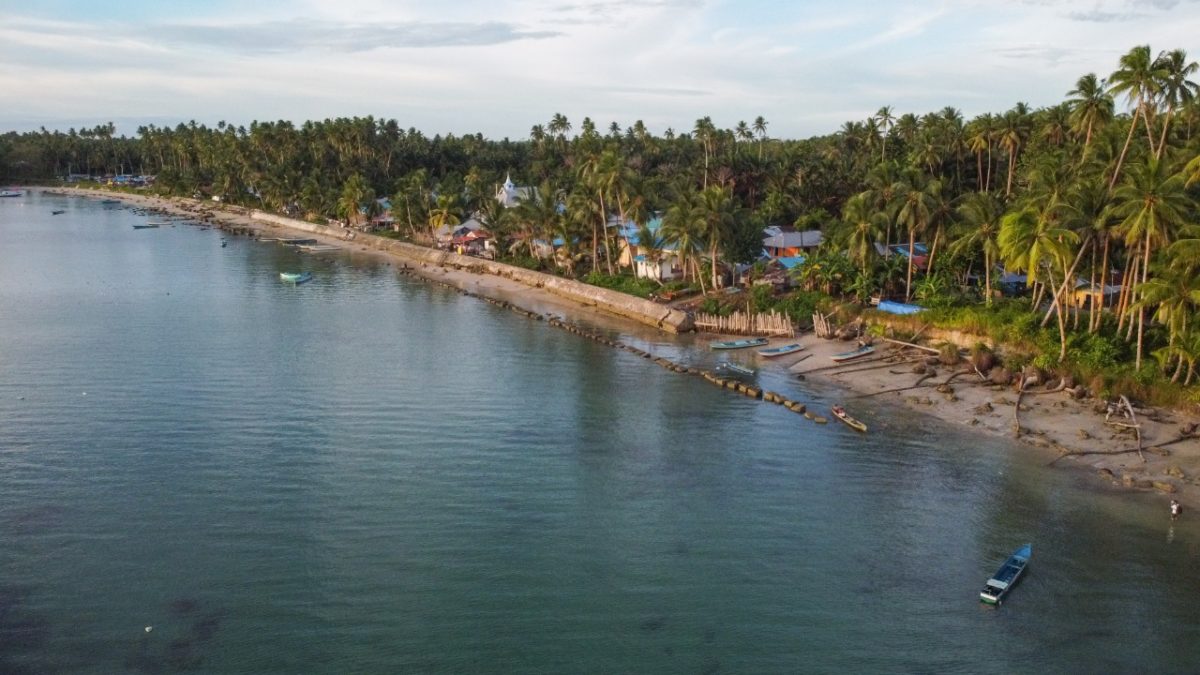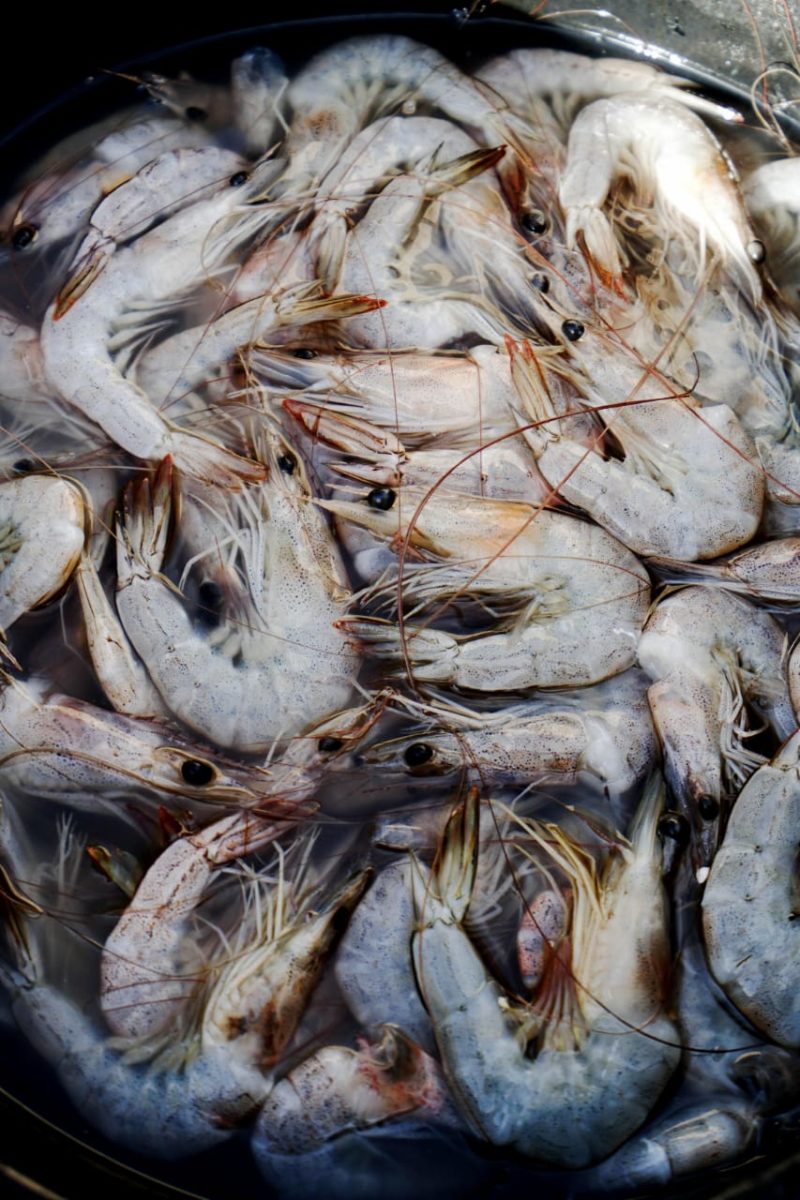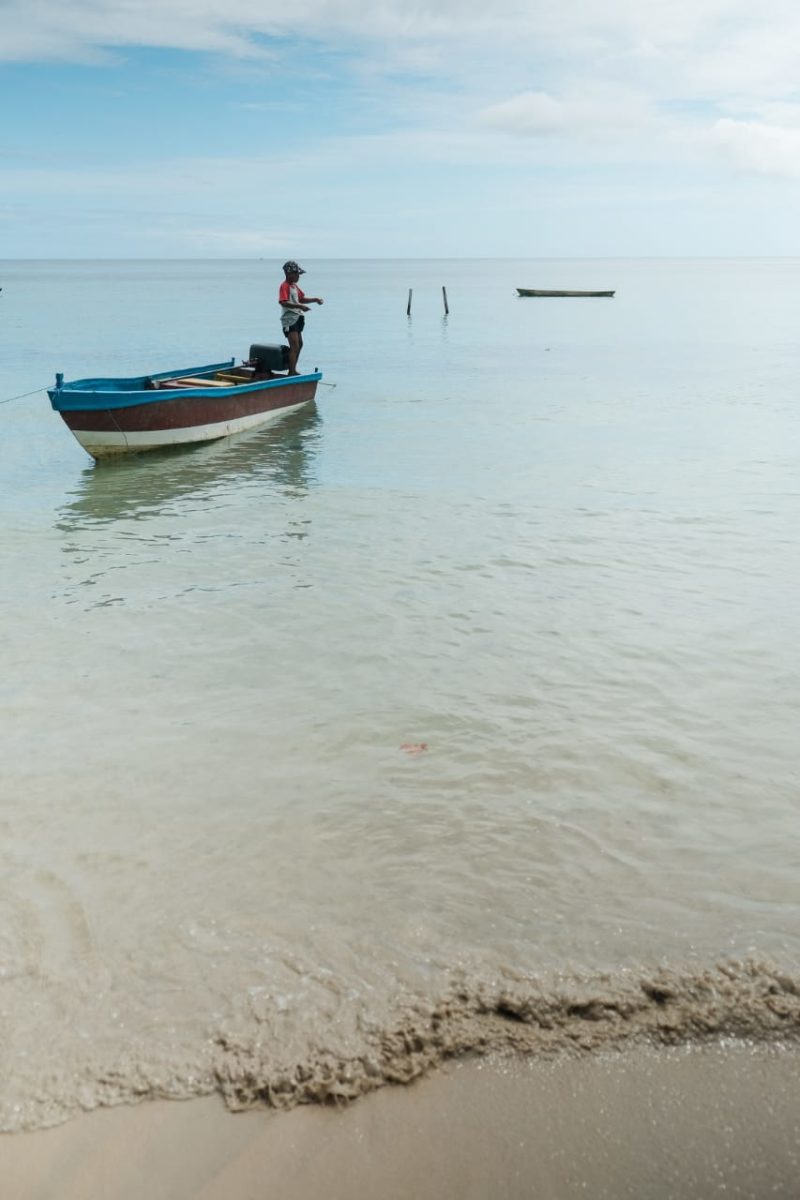In 2019, the district of Aru Islands claimed that they had a potential shrimp fisheries resources of up to 21,111.28 tons a year. Yet according to the national statistics of Maluku province in the same year, only 3,029 were harnessed, but still represent the largest number of shrimp fisheries in the province. The majority of the harnessing potential can be found in Jabulenga village, part of the sub-districts of Aru Islands, the majority of the villagers are shrimp fishermen and women. To reach Jabulenga village from Dobo, the capital city of Aru Islands, would take approximately 30 minutes by small boat.

Credit: ATSEA-2
The ATSEA program staff visited Jabulenga village on 9th September 2020 to investigate and reconfirm the total contribution of shrimp catch and the effects it has to the fisheries in Aru Islands, which are a part of the Arafura and Timor Seas (ATS) region. In this second phase funded by the GEF, ATSEA will implement the Fisheries Improvement Programme (FIP) of red snapper and shrimp in the Aru Islands, Maluku. The types of shrimp caught in Jabulenga are tiger and banana shrimp, which are commonly found in restaurants the world over. Other than shrimp, fishermen of the village also catch lobsters and harvest seaweed which are mostly small yields.

Credit: ATSEA-2
According to Mr. Budi Sair, one of the shrimp fishermen there, in one day a fisherman from Jabulenga can contribute to a catch of 50 to 60 kgs of shrimp that would later on be sold at a rate of IDR 70,000 to 100,000 per kg in Dobo’s market. These rates are the norm for shrimps that are sold on this market and the total catch is always sold out on the same day. This type of system where the fisherman can determine their price can be beneficial. In the past, fishermen were forced to sell their catch to big companies in Benjina who demanded much lower rates. Furthermore, the big companies also negatively impact the fisheries region by using fishing tools that are damaging to the environment in the shallow waters, an area where fishermen catch shrimp with their traditional fishing nets. Now, those big companies have been forced to close down by the government and the coastal waters of Jabulenga are starting to recover.
Credit: ATSEA-2
However, the current system in the market of direct transaction with customers is facing a challenge. Even if it has not impacted fishing activities, the COVID-19 pandemic has made an impact on the sales of shrimp catch of Jabulenga. Until September 2020, the public health office of the Aru Islands had not recorded any cases of COVID-19 in the district. However, the local community still implemented health protocols by restricting activities out of their house. This impacted the number of shrimp traders that decreased and for the majority of transactions in the market to decrease as well. Jabulenga fishermen are also weary to go to Dobo to sell their catch as they usually would. With the current situation, they are forced to sell their catch to collectors (that they call containers) at a very low price, up to half of that of the market’s. The yield sold in one day barely comes up to 30 kgs, because all fishermen go to the same 2 or 3 collectors. As for the rest of the unsold catch, they are to be consumed by the family household.
In a situation like this, fishermen hope that the local or provincial fisheries office would facilitate Jabulenga with a cold storage solution to store their yield and to hand over its management to the Village Affairs Agency (Badan Urusan Milik Desa). Their recommendation will be considered as a general recommendation of baseline assessment result which the assessment conducted by the National Coordination Unit of ATSEA-2 last November 2020. That way, fishermen can still control the market price in case the pandemic runs for longer or a similar situation happens again in the future.
Read also: New Hope for Karey Village and Aru Tenggara Marine Protected Area






